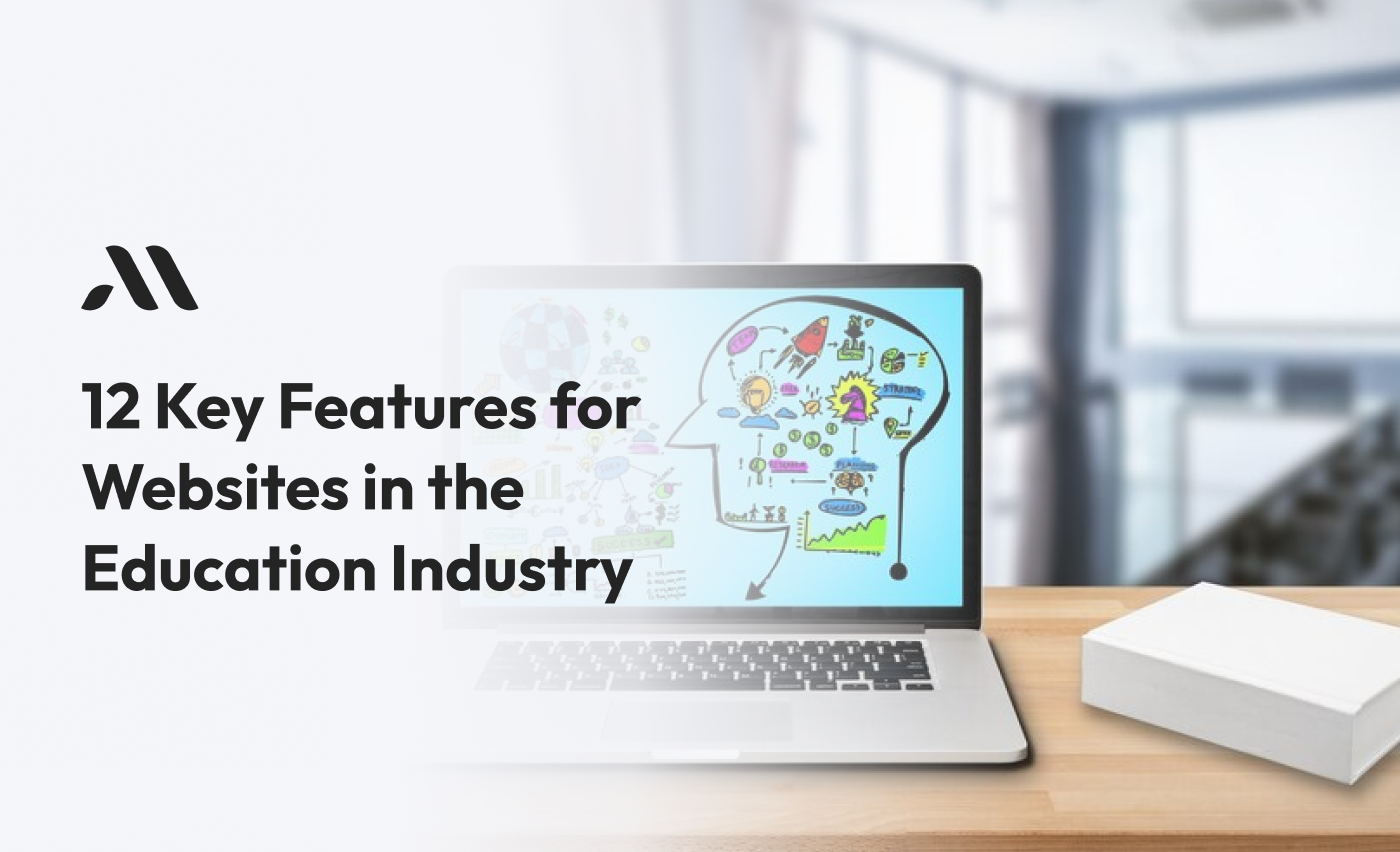In today’s digital world, having a website is super important, especially in the education industry. Whether it’s a school, college, or online learning platform, the right education website features can make all the difference. A great Education website can attract students, provide valuable information, and even support online learning. Let's jump into the 12 key education website features that every education-related business owner should consider.
1. User-Friendly Navigation
One of the most important education website features is easy navigation. A website should be simple to explore, even for young students. When a website is easy to use, visitors can quickly find what they’re looking for, like course information or contact details. Good navigation also helps in reducing bounce rates.
Tip: Use a clear menu at the top of the page with categories like “Courses,” “About Us,” and “Contact.”
2. Mobile Responsiveness
Did you know that over 50% of web traffic comes from mobile devices? This makes mobile responsiveness a crucial education website feature. A responsive website adjusts itself according to the screen size, making it accessible on smartphones and tablets.
Note: Mobile-friendly websites rank higher on search engines like Google.
3. Course Listings and Descriptions
When people visit an education website, they usually want to know what courses are offered. Detailed course listings and descriptions are essential education website features. These should include course content, duration, fees, and eligibility criteria.
Remember: Keep the language simple and easy to understand, even for younger audiences.
4. Online Enrollment System
An online enrollment system is one of the key education website features that make the admission process smooth. This feature allows students to apply for courses directly from the website, saving time and effort.
Tip: Ensure the enrollment form is simple and doesn’t ask for too much information upfront.
5. Interactive Learning Tools
Interactive learning tools, like quizzes, videos, and discussion forums, are great features of websites in the Education sector. These tools engage students and make learning fun and interactive.
“Interactive tools are the bridge between traditional learning and modern education.”
6. Secure Payment Gateway
A secure payment gateway is vital for websites that provide paid courses or resources. It ensures that students can safely pay for their courses online. This education website feature builds trust and credibility with users.
Note: Always display trust badges from payment providers like Visa or PayPal to reassure users.
7. Student and Faculty Portals
Student and faculty portals are special areas on the website where users can log in to access personalized information. These portals are important higher education website features as they allow students to check grades, download study materials, and communicate with teachers.
Tip: Use easy-to-remember usernames and passwords to encourage more frequent use.
8. Search Functionality
A powerful search function is a must-have education website feature. It helps visitors quickly find the information they need, like specific courses, faculty details, or news updates.
Remember: Place the search bar in a prominent spot, usually at the top of the page.
9. Testimonials and Success Stories
Testimonials from students and success stories can greatly impact a visitor’s decision-making process. These general features of an education website build trust and showcase the institution’s success.
Websites with testimonials can increase conversions by 34%.
10. Blog Section
A Blog Section is an important educational website feature that can drive traffic to your site. Blogging about educational topics, tips, and industry trends can attract more visitors and improve your website’s SEO ranking.
Also Read - Best CRM for Educational Institutions: A Complete Guide
11. Contact Information and Support
Always include clear contact information, such as phone numbers, email addresses, and physical locations. This is a basic but crucial education website feature. Also, consider adding live chat support for instant help.
Tip: Make sure your contact page is easy to find and includes multiple ways to get in touch.
12. Visual Amazing and Branding
The design of your website should reflect your institution’s brand. A visually appealing website is more likely to keep visitors engaged. Use your school colors, logos, and images to create a cohesive look. This education website feature is all about making a good first impression.
“A well-branded website is a powerful tool in building trust and recognition.”
Final Thoughts
Building an effective education website requires attention to detail and a focus on user experience. By incorporating these 12 key education website features, you can create a website that is not only informative but also engaging and user-friendly. Whether you are developing a site for a school, college, or online platform, these features are essential for success.
A well-designed website can Increase User Engagement by up to 200%.
If you're looking to create or improve your education website, partnering with a Professional Website Development Company can ensure you get all these features integrated perfectly. Remember, a great education website is more than just a digital presence it's a powerful tool for learning and growth.
Ready to build an amazing education website? MicraSol is here to help! Our expert team will create a user-friendly, mobile-responsive site that showcases your courses and engages students. Let’s make learning easier and more fun. Contact MicraSol today and take your education website to the next level!
FAQS
Why is easy navigation important for an education website?
Easy navigation is one of the key education website features because it helps visitors quickly find what they’re looking for. Whether it’s a student trying to find a course or a parent looking for contact information, easy navigation makes the website user-friendly and keeps visitors engaged.
What does it mean for a website to be mobile responsive?
A mobile-responsive website adjusts itself to fit the screen size of any device, like a smartphone or tablet. This is important because many people use their phones to browse the web, and a mobile-responsive design ensures your site looks good and works well on all devices.
What should be included in the course listings on an education website?
Course listings should include the course title, description, duration, fees, and eligibility criteria. This information helps students and parents understand what the course offers and if it’s the right fit for them.
How does an online enrollment system benefit an education website?
An online enrollment system helps students to apply for courses directly through the website. This makes the admission process faster and more convenient, both for the students and the institution.
What are interactive learning tools, and why are they important?
Interactive learning tools, like quizzes, videos, and discussion forums, make learning more engaging. These tools are important features of websites in education because they help students better understand the material and make learning more enjoyable.








